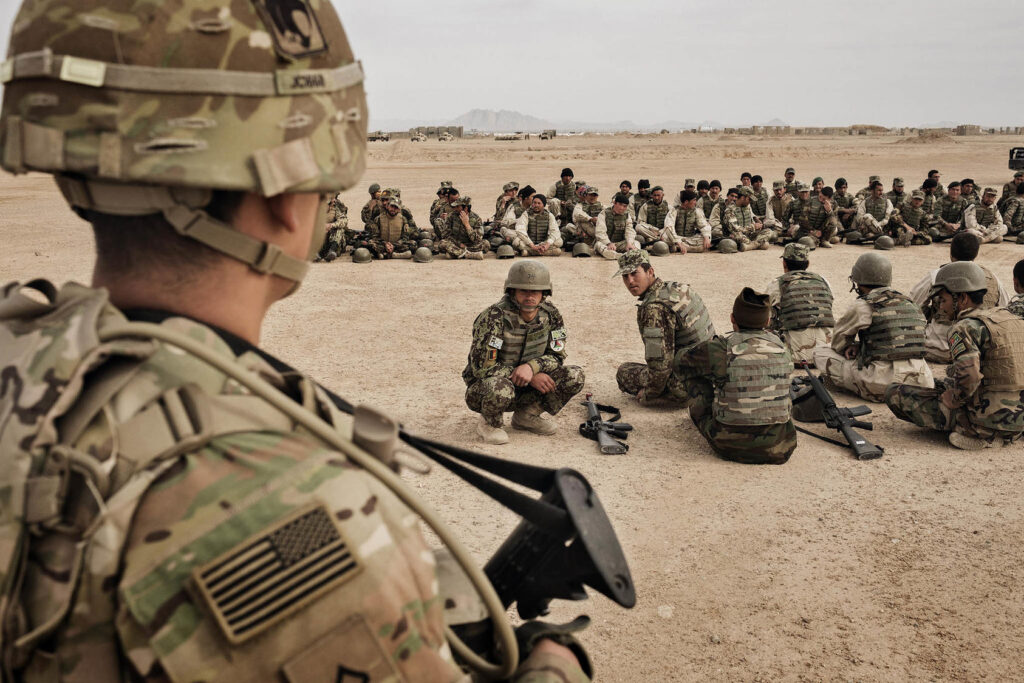Did the U.S. invade Afghanistan solely to fight terrorism—or were there deeper economic and strategic interests at play?
Over 240,000 lives lost, trillions of dollars spent, and two decades of conflict—was the “War on Terror” truly about justice for 9/11, or was it a calculated move for geopolitical dominance? While the Bush administration framed the 2001 invasion as a necessary response to Al-Qaeda’s attacks, declassified documents, expert analyses, and historical context suggest that the U.S. had long-standing strategic interests in Afghanistan, including control over Central Asian energy routes, rare minerals, and military expansion.
This article critically examines the official narrative of the Afghanistan invasion while presenting documented evidence of alternative motivations—geopolitical maneuvering, resource extraction, and the influence of the military-industrial complex.
TL;DR – Key Arguments at a Glance
- The U.S. justified the 2001 invasion as retaliation for 9/11 and to dismantle Al-Qaeda, but evidence suggests broader strategic goals.
- Afghanistan’s geographic position makes it crucial for controlling Central Asian energy pipelines (e.g., TAPI).
- The country holds vast untapped mineral wealth (lithium, rare earths) valued at over $1 trillion.
- Defense contractors (Lockheed Martin, Halliburton) profited immensely from prolonged war.
- Pre-9/11 intelligence warnings were ignored, raising questions about deliberate inaction.
- The long-term consequences include destabilization, Taliban resurgence, and a global rise in terrorism.
The Official Justification: 9/11, Al-Qaeda, and the Taliban
Following the September 11, 2001 attacks, President George W. Bush declared a “Global War on Terror,” identifying Afghanistan as the primary target due to the Taliban’s harboring of Al-Qaeda leader Osama bin Laden. The U.S. demanded that the Taliban surrender bin Laden; when they refused, Operation Enduring Freedom commenced on October 7, 2001.
Publicly stated goals:
- Eliminate Al-Qaeda.
- Remove the Taliban from power.
- Establish a democratic government.
However, critics argue that the U.S. had already been eyeing Afghanistan for strategic reasons long before 9/11.
The Hidden Motives: Geopolitics and Economic Interests
1. Geopolitical Strategy: Controlling Central Asia
Afghanistan sits at the crossroads of Central Asia, bordering China, Iran, and former Soviet states—a region rich in oil and gas.
The Great Game 2.0
Zbigniew Brzezinski, former U.S. National Security Advisor, wrote in The Grand Chessboard (1997) that controlling Eurasia was key to global dominance. He argued that the U.S. must prevent any single power (like Russia or China) from dominating the region. Afghanistan’s instability in the 1990s presented an opportunity for U.S. influence.
In the 1980s, the U.S. had already intervened in Afghanistan by funding and arming the Mujahideen (including Osama bin Laden) against the Soviet Union. After the Soviet withdrawal in 1989, Afghanistan descended into civil war, creating a power vacuum. By the late 1990s, the Taliban emerged as the dominant force, but their refusal to cooperate with U.S. energy interests made them a target.
Pipeline Politics: The TAPI Project
One of the most significant economic motivations was the Turkmenistan-Afghanistan-Pakistan-India (TAPI) gas pipeline, first proposed in the 1990s. The pipeline aimed to transport natural gas from Turkmenistan through Afghanistan to Pakistan and India, bypassing Russia and Iran.
- Unocal’s Role: In 1997, the U.S. oil company Unocal negotiated with the Taliban to secure the pipeline route. However, talks collapsed due to the Taliban’s demands and growing international pressure over their human rights abuses.
- Post-Invasion Revival: After the 2001 invasion, the TAPI project regained momentum. In 2002, Hamid Karzai’s U.S.-backed government signed agreements to revive the pipeline, confirming suspicions that energy interests were a key factor in the war.
Countering Russian and Chinese Influence
Afghanistan is part of a broader U.S. strategy to limit Russian and Chinese expansion in Central Asia:
- Russia’s Sphere of Influence: The U.S. sought to weaken Moscow’s control over Central Asian energy exports.
- China’s Belt and Road Initiative (BRI): Afghanistan’s mineral wealth is critical for China’s tech industry. By controlling Afghanistan, the U.S. could disrupt China’s supply chains.

2. Afghanistan’s Untapped Mineral Wealth
A 2010 Pentagon memo called Afghanistan the “Saudi Arabia of lithium,” with over $1 trillion in untapped minerals, including:
- Lithium (essential for electric vehicle batteries and electronics).
- Rare earth elements (used in missiles, smartphones, and renewable energy tech).
- Copper, gold, and iron ore (critical for infrastructure and manufacturing).
Pre-War Knowledge of Resources
The U.S. Geological Survey (USGS) had mapped Afghanistan’s mineral deposits as early as the 1970s, but the Soviet invasion and subsequent wars delayed exploitation. In 2004, a USGS report confirmed vast reserves, yet the U.S. failed to secure them effectively.
Who Profits?
- Chinese Dominance: After the U.S. withdrawal, China secured mining rights to Afghanistan’s Mes Aynak copper mine and other lithium deposits.
- Failed U.S. Extraction Efforts: Corruption, insecurity, and lack of infrastructure prevented American companies from capitalizing on these resources.
3. Military-Industrial Complex Profits
The war was a financial windfall for defense contractors, private security firms, and arms manufacturers:
Key Corporations That Benefited
- Halliburton (Dick Cheney’s former company): Received $39.5 billion in contracts for logistics and oil services.
- Lockheed Martin, Boeing, and Raytheon: Profited from arms sales, drone warfare, and missile systems.
- Blackwater (now Academi): Expanded private military operations, with controversial incidents like the 2007 Nisour Square massacre.
The Cost of Forever War
A 2021 Brown University study estimated the total cost of the Afghanistan War at $2.3 trillion, with much of the spending going to private contractors rather than reconstruction.
Key Players & Deceptions
Pre-9/11 Warnings Ignored?
Declassified documents reveal that U.S. intelligence had multiple warnings before 9/11:
- August 6, 2001, Presidential Daily Brief: Titled “Bin Laden Determined to Strike in U.S.”, it warned of potential hijackings but was dismissed.
- FBI Whistleblowers: Agents like Coleen Rowley reported that the CIA withheld critical intelligence.
Contradictions in Official Statements
- Donald Rumsfeld (Secretary of Defense):
- Pre-9/11, he advocated for “multiple theaters of war” to justify military expansion.
- Post-invasion, he admitted the U.S. had “no evidence” linking Iraq to 9/11, yet invaded in 2003.
- Zbigniew Brzezinski:
- Admitted in a 1998 interview that the U.S. had supported Islamist militants in the 1980s to counter the USSR.
The Role of Oil Lobbyists & Neoconservatives
- Paul Wolfowitz (Deputy Defense Secretary): Advocated for regime change in Iraq and Afghanistan long before 9/11.
- Dick Cheney’s Energy Task Force (2001): Secretly discussed dividing Middle Eastern oil fields, including Central Asia’s reserves.
Consequences: Destabilization & Taliban Resurgence
Human Cost
- Civilian Casualties: Over 70,000 Afghan civilians killed (Brown University).
- Refugee Crisis: 2.6 million Afghans displaced, with many fleeing to Pakistan and Iran.
Rise of ISIS-K & Global Terrorism
The power vacuum led to the emergence of ISIS-Khorasan (ISIS-K), a more brutal offshoot of the Islamic State.
Taliban’s Return in 2021
The U.S. withdrawal saw the Taliban regain control within weeks, undoing 20 years of “nation-building.”
Media & Propaganda: Shaping the “War on Terror” Narrative
The U.S. media largely echoed government talking points, with little scrutiny of alternative motives. Critical voices like Noam Chomsky and Seymour Hersh were marginalized.
FAQ Section
1. Was Bin Laden the primary target, or were there bigger goals?
While capturing Bin Laden was a stated goal, documents suggest broader interests in regional control.
2. Did the U.S. plan to stay in Afghanistan long-term?
Leaked cables indicate plans for permanent military bases, likely to secure resources.
3. Why didn’t the U.S. secure Afghanistan’s minerals?
Corruption, instability, and lack of infrastructure made extraction difficult. China now dominates Afghan mining.
Final Thoughts: Was the Invasion Justified?
The “War on Terror” narrative masked deeper geopolitical and economic ambitions. While combating terrorism was a legitimate concern, evidence suggests the U.S. invasion of Afghanistan was also about securing energy routes, exploiting resources, and expanding military influence.
What do you think? Was the invasion a necessary response to 9/11, or a strategic power grab? Share your views below.
Sources & Further Reading
- Brzezinski, Z. (1997). The Grand Chessboard
- Coll, S. (2004). Ghost Wars
- PDF Archive (Free Preview) (Note: Check copyright restrictions for full text)
- Brown University, “Costs of War” Project (2021)
- U.S. Geological Survey, Afghanistan Mineral Reports
- Declassified CIA Memos (NSA Archive)




